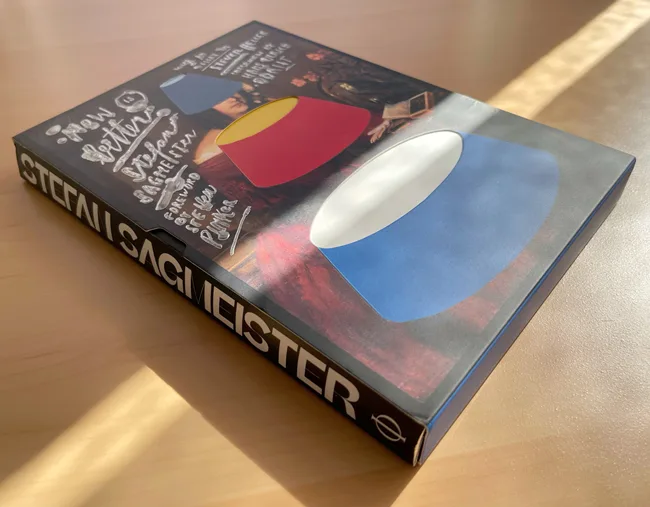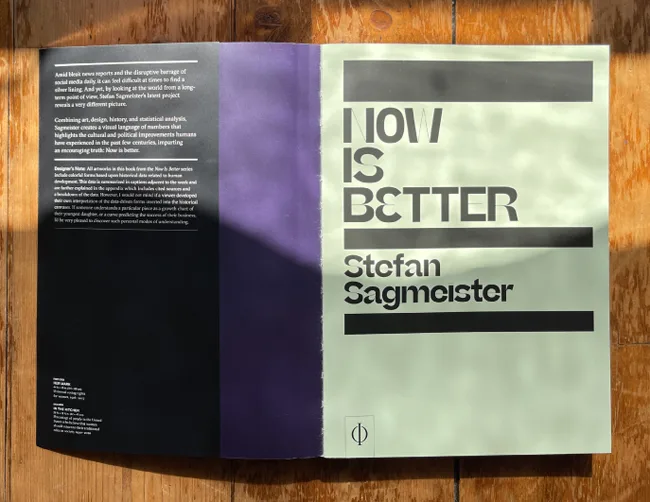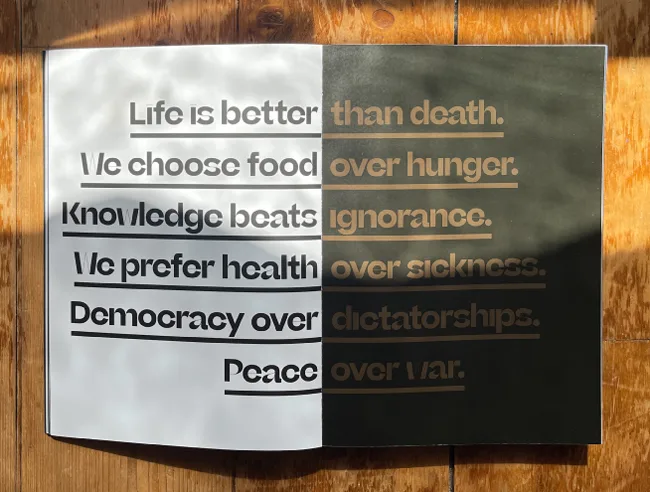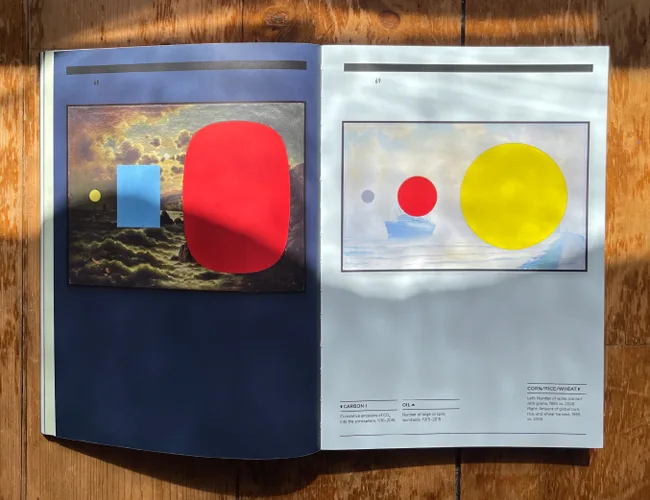For me, Stefan Sagmeister is the Salvador Dalí of our time; the 21st century Renaissance Man. Oozing creative genius and ignited by passion, his curiosity lies in so many areas of the creative industry. He is a graphic designer, typographer, and teacher. He collaborates with other designers, family, and friends in product design, fashion, and murals. He is a director, exhibits globally, and has authored several books.
His latest book, Now Is Better, visually shows us that our world is not as “doom and gloom” as we think. It has, in fact, significantly moved forward in so many positive ways, but we are unable to see it because “long term improvement happens in small increments and therefore does not lend itself to short-term news cycles.” He demonstrates this with colourful and bold geometric shapes against the backdrop of old historical paintings so we can physically see the change rather than try to decipher the numerical data which can so often become blurred.
The book gently analyses wider issues such as war, democracy, hunger, and climate change whilst reading as a Sagmeister story, making it relatable in a myriad of ways beyond the art. I found the mentions of child mortality particularly close to my heart, as mine is the first generation in my family where losing young children isn’t the norm.
It was the discussion of the “blurring of boundaries between art and design” that, for me, rooted the book into the here and now. Earlier this month I wasn’t sure whether to continue calling myself a graphic designer or a graphic artist as I am now creating work for exhibitions, not functionality. I’ve yet to decide my title but reading Sagmeister’s argument, I think I will always first and foremost be a designer.
The book is a visual feast – even the case it comes in is beautiful – and is grounded in optimism. It makes you feel that despite the chaos that ensues the world, in the grand scheme of things, with technological and scientific advancements, socioeconomic shifts, education, and the drive to change people’s perspectives, there is a steady growth (albeit a slow one) and this is what Sagmeister is trying to convey through the language of design:
“The world is terrible. The world is fantastic.”





*a few photos to whet your appetites but I really do think it’s a book worthy of shelf space.